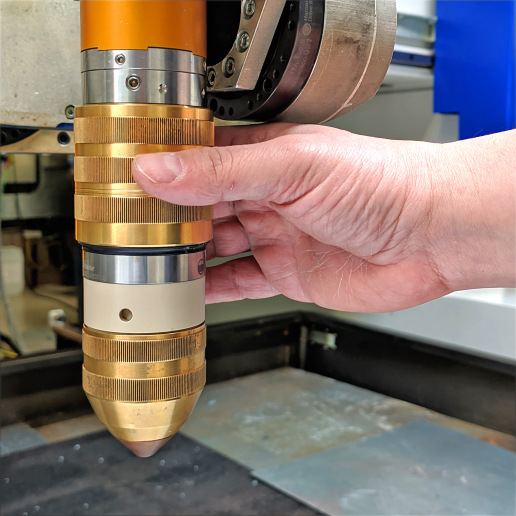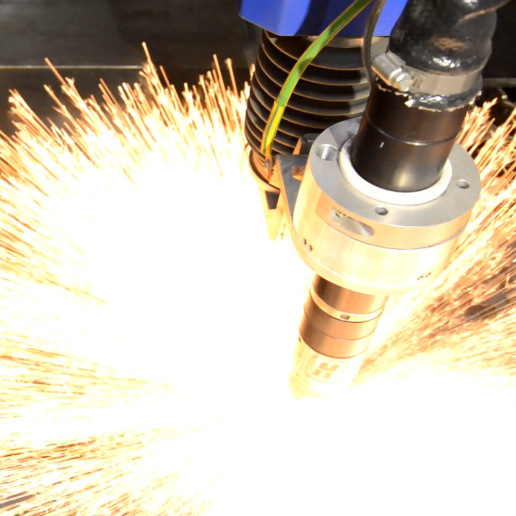What should be done to run plasma cutting process properly?

Qualified operator who can properly maintenance CNC cutting machine is a key to success. Lack of additional repairs and downtimes allows for saving many operational expenditures. Correct machine operations mean maintaining the continuity of the production process, and thus constant and even greater profits for the company. What should be born in mind during plasma cutting, to receive the best possible results?

1. Correct torch assembly
Torch is one of the most important parts of the plasma cutting machine because ionised plasma arc flows right through it. All its elements are supposed to create a perfect harmony and should be correctly aligned. The quality of the electrical joint and the correct flow of gas and coolant depend on it. When assembling the torch, remember to keep it clean and apply a suitable amount of grease to the ring. After applying this chemical, it should shine slightly. Excess grease can clog the gas swirl part and contaminate the torch with metallic dust. And hence a simple path to the unpleasant consequences in the form of uncontrolled ignition of the arc in the plasma chamber and the final damage to the torch.2. Regular replacement of consumables
It is very important to monitor consumables exploitation level that are responsible for proper work of particular components. Elements should be replaced along with the end of their lifetime and neglecting to do so may lead to the devaluation of the metal sheet, damage to the torch and downtime of the plasma cutting machine. There are several warning signals that indicate wear of consumables: sound, arc color, minor changes in torch height position. The easiest way is to check the quality of the cut edge. Usually its deterioration indicates problems. It will also be helpful to keep systematic documentation on the durability of the consumable part (based on the operating time of the arc or the number of starts).
3. Periodic maintenance
Torch can be exploited for several months or even years if it is kept in good shape. Its screw should be always clean. Any speck of metallic dust, grease residues or dirt must be removed from the O-ring without fail. A cotton swab and electrical joint cleaner or hydrogen peroxide can be used to clean the torch.
4. Control of gas and coolant flow
Should be checked every day. Incorrect flow results in insufficient cooling of the consumables, which reduces their durability. The most common cause of component and torch failures is improper coolant flow, such as pump wear, low coolant levels, or clogged filters. Constant gas pressure is essential to maintain the cutting arc. The "difficult start" situation occurs when the torch cannot ignite the arc because the gas pressure is too high. It also affects the increased wear of the electrode. It is also important to keep the plasma gas clean.

5. Piercing at the proper height
The distance between the tip of the nozzle and treated material has a fundamental importance in maintaining the quality of the cut and the durability of consumables. Even a slight deviation in the height of the torch can affect the angularity of the cut surface. Piercing too low is the most common mistake. Molten metal splashes at the front of the nozzle and cover, putting parts at risk of damage. The arc is often "extinguished" when the torch pierces the metal after joint, or is even dragged along the surface. If this happens, the electrode, nozzle, swirl element and even the torch may be damaged. To avoid this type of situation, you should pierce 1.5-2 times higher than it is recommended.
6. Proper cutting speed
If the plasma cutting process is performed too slowly, then on the cut parts you can see an accumulation of slag lumps along the lower edge (so-called "slow slag"). Low speed can also affect the width of the gap and an excessive amount of spatter on top. Too high speed of the plasma cutting process causes the arc to be delayed in the gap, resulting in edge bevelling, a narrow gap and slag particles on the lower edge of the part to be cut. If the cutting speed is selected appropriately, the amount of generated slag is minimal.
7. Torch and material collision
Unfortunate collapse or torch collision with treated elements may cause its permanent damage. The easiest way to avoid this is to program the cut so that the torch moves around the cut parts, not directly over them. Some devices are equipped with height sensors or an electronic material detection sensor, which significantly minimize the risk of unwanted faults.
Qualified & experienced operator, technique and the ability to observe are three key elements that allow the plasma cutting process to be carried out correctly. A properly maintained CNC cutting machine and its components can serve for many years of work, keeping the quality of the cut at the highest level.
